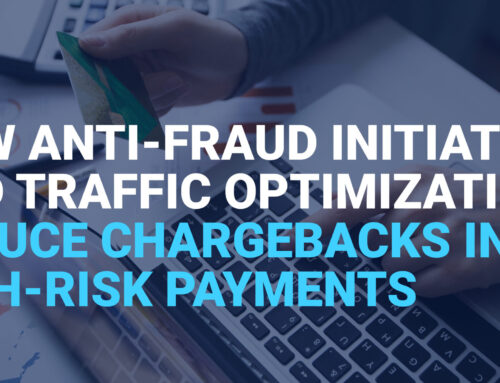In 2025, merchants (especially those scaling globally or operating across many payment providers) no longer see payment orchestration as a “nice‐to‐have” — it’s becoming essential “must-have”. Investors and industry reports now see orchestration platforms as foundational in payments infrastructure.
1. Single integration point, many downstream systems
One of the most significant complexity reductions is that merchants integrate once (via an API or SDK) to an orchestration layer, rather than separately integrating with each PSP, acquirer, gateway, or country-specific payment method. This “one-to-many” abstraction significantly lowers engineering overhead as merchants expand.
Moreover, payment orchestration platform enables dynamic routing, fallback logic, and intelligent decision-making without requiring a revision of the merchant code each time a new provider or method is added. In other words, the merchant can evolve without constant re-engineering at every integration point.
2. Smart routing & failure resilience
As merchants scale across geographies, they face variable success rates, downtime, gateway slowness, and cost differences. Modern orchestration platforms embed smart routing logic—routing each transaction to the PSP/route with the highest approval probability (or lowest cost) in real time.
If one route fails, fallback paths ensure continuity. This avoids lost transactions, improves authorization rates, and avoids “single point of failure” dependence on one PSP. Juniper’s 2025 research explicitly calls out smart routing as a key function of POPs (payment orchestration platforms) supporting “glocal” payment strategies.
3. Normalization of data, reconciliation, and common reporting
Merchants often struggle with fragmented reporting, reconciliation mismatches, and data silos when working with multiple PSPs. Orchestration platforms consolidate transaction, settlement, chargeback, and refund data across all providers into a unified dashboard or data warehouse interface.
This “data normalization” saves significant operational effort, reduces errors, and gives merchants fill-picture insights on payment performance (by region, PSP, method) using consistent metrics.
4. Security, tokenization & data ownership
As merchants scale and process more volume, securing payment data and controlling tokenization becomes critical. A “security-first” orchestration approach ensures that token vaults, encryption, and PCI compliance are embedded, rather than fragmented across PSPs.
Moreover, merchants increasingly demand data ownership, meaning that payment metadata and tokens aren’t locked within a PSP but are accessible across the orchestration layer for analytics, fallback, or future migrations. According to Bluefin’s 2025 report, 71 % of large merchants view independent data ownership as a strategic imperative.
5. Balancing global + local (“glocal”) complexity
Global merchants face a central challenge: unify infrastructure while respecting local payment preferences, rules, and risk signals. Orchestration platforms bridge this by integrating regional PSPs and local methods into a consistent core.
For instance, what works in Europe for 3DS and issuer behavior might not hold in India or Brazil; orchestration lets merchants dynamically adapt routing and risk logic per region without rewriting their core logic.
This hybrid approach (global backbone + localized decisions) is increasingly viewed as a necessity rather than a luxury.
6. Automated post-processing, chargeback/dispute orchestration, and refunds logic
Chargebacks, disputes, refunds, and reconciliation tasks remain among merchants’ biggest pain points. Orchestration platforms are evolving to not just handle routing but also the lifecycle of transactions:
- triggering refund logic,
- coordinating evidence submission for disputes,
- automating retries or reversal workflows,
- linking settlement data to operational systems.
In 2025, smarter orchestration platforms are embedding post-processing tools (e.g., chargeback management modules) to reduce manual overhead
Merchants can thus unify front-end routing with back-end dispute flow logic under the same orchestration umbrella.
7. Modular, no-code/low-code connectivity & platform extensibility
The latest orchestration platforms are no longer monolithic; they adopt modular, composable architectures. They allow merchants (or their platform partners) to plug in new modules—for fraud, wallets, loyalty, BNPL, alternative local methods—often via no-code or configuration interfaces.
This reduces dependence on heavy engineering cycles whenever new payment methods or services emerge in a region. It shifts orchestration from “constant integration burden” into “configuration and extension burden.”
8. AI and predictive decisioning embedded in orchestration
One of the emerging frontiers is embedding AI/ML models in the orchestration layer to make real-time routing and fraud decisions. Because orchestration has access to broad data across PSPs, it can train intelligent models to predict success probability, detect anomalies, or auto-adjust routing weights.
In many 2025 cases, orchestration is seen as the natural host for predictive decisioning because it centrally sees the full picture. Indeed, H1 2025 fintech investment reports highlight orchestration and AI-native fraud detection as core focuses.
9. Cost optimization, dynamic fee management, and margin control
Routing isn’t just about maximizing success — it’s about optimizing cost. Orchestration platforms can dynamically route based on fee structures, interchange rates, FX spread, or promotion-driven margins. This means merchants can balance between maximizing approval and minimizing cost in a data-driven fashion.
As merchants scale, even small percentage improvements in routing cost can translate into millions of euros in saved fees annually.
Challenges & Considerations (so complexity isn’t simply shifted)
While orchestration reduces a lot of complexity, it also introduces new design and operational considerations. Knowing them up front is key.
- Governance & decision logic complexity: You shift complexity from integrations to routing logic and configuration. Poor rule design can lead to unintended routing loops, conflicts, or suboptimal outcomes.
- Latency & performance: Orchestration must operate at sub-millisecond speeds to avoid adding checkout lag, especially when routing or evaluating logic. Platform performance is critical.
- Vendor lock-in vs portability: While orchestration abstracts PSPs, if the orchestration platform itself becomes a bottleneck or lock-in, risk shifts upstream.
- Regulatory, licensing & compliance scope: As orchestration spans geographies, careful attention is required to licensing, data protection, cross-border flows, and PSD3-like directives in Europe.
- Edge cases & reconciliation mismatches: Despite normalization, there can be mismatches in settlement, currency conversions, refunds, or chargeback flows across providers that require careful reconciliation logic.
- Security & data responsibility: Centralizing token vaults and routing logic concentrates sensitive data; proper encryption, PCI compliance, and segregation is essential.
Outlook & Why PayGames Should Care
For PayGames, orchestration isn’t about becoming a SaaS “do-it-yourself” hub where merchants plug and play providers on their own. Instead, it’s about understanding the shift in merchant expectations and embedding orchestration principles into the payment solutions we already deliver as a PSP.
- Merchants want simplicity, not fragmentation. They increasingly expect one partner to manage routing, redundancy, and local adaptation, without having to build or maintain complex orchestration logic themselves. This is where PayGames creates value: we provide end-to-end payment solutions, taking orchestration complexity off the merchant’s shoulders.
- Competitive advantage through intelligent infrastructure. While pure orchestration platforms focus on dashboards and self-service, PayGames can translate the same capabilities—smart routing, fallback resilience, regional optimization—into fully managed solutions. This allows us to position ourselves not just as a PSP, but as a PSP-plus: offering reliability, cost-efficiency, and better approval rates without extra merchant overhead.
- Data ownership and insights as differentiators. By embedding orchestration-like data normalization and analytics into our offering, PayGames can give merchants actionable intelligence (success rates, cost efficiency, fraud insights) while keeping ownership of sensitive flows structured and compliant.
- Futureproofing against regulation and AI-driven payments. With PSD3, open banking, and AI-based risk and routing decisions on the horizon, orchestration principles will increasingly become part of compliance and infrastructure. PayGames’ role is not to sell orchestration as a tool, but to integrate these functions directly into our payment services—ensuring merchants benefit seamlessly.
In short: Orchestration platforms highlight what merchants value—flexibility, resilience, and intelligence in payments. PayGames doesn’t need to compete as a SaaS orchestrator; instead, we can internalize orchestration principles into our PSP model, giving merchants the outcomes they want (higher approval, lower cost, reduced complexity) in a fully managed, plug-and-play way. That’s how orchestration becomes our strategic leverage.q



